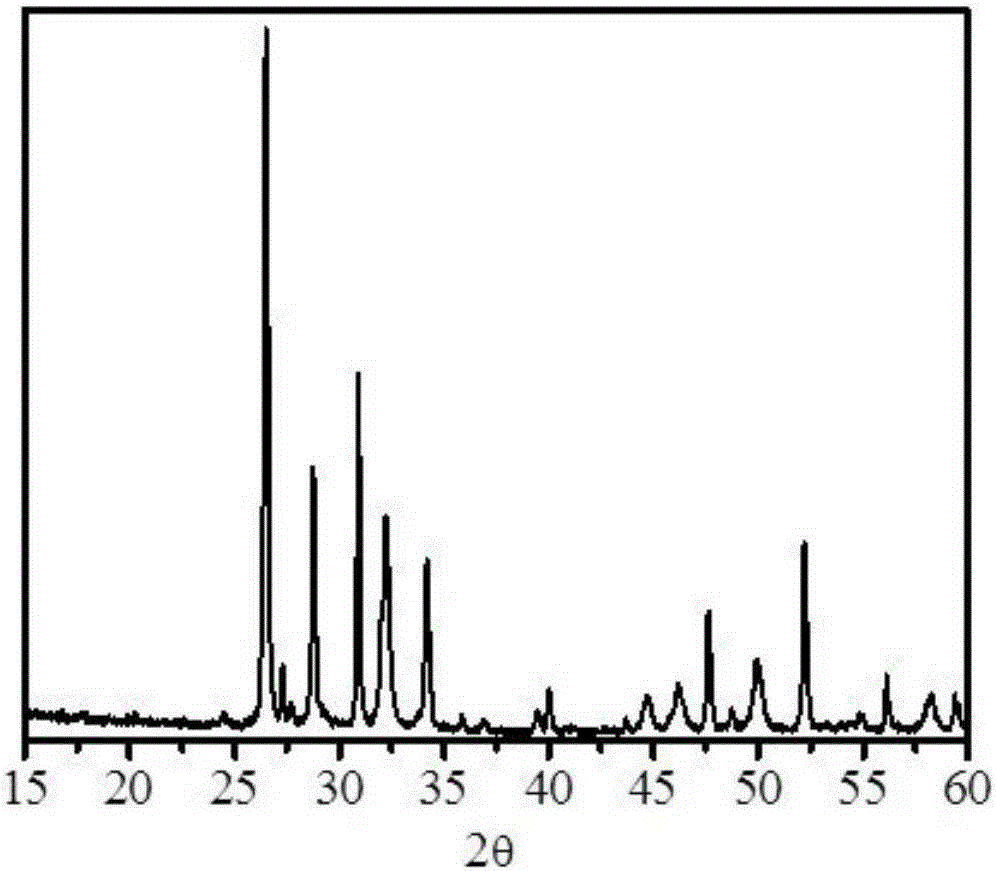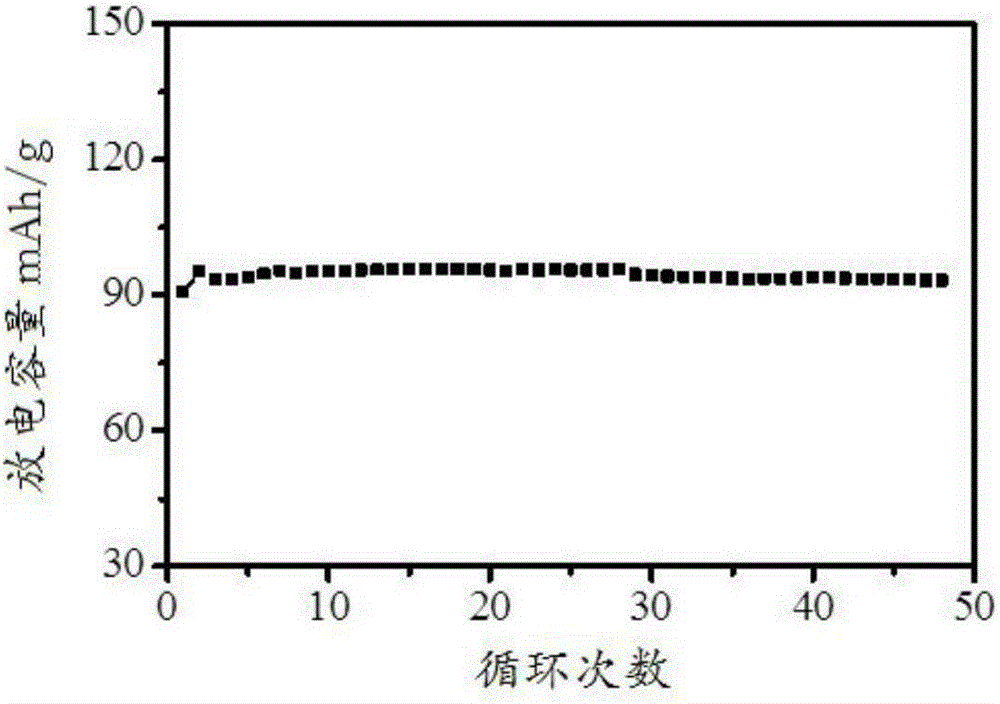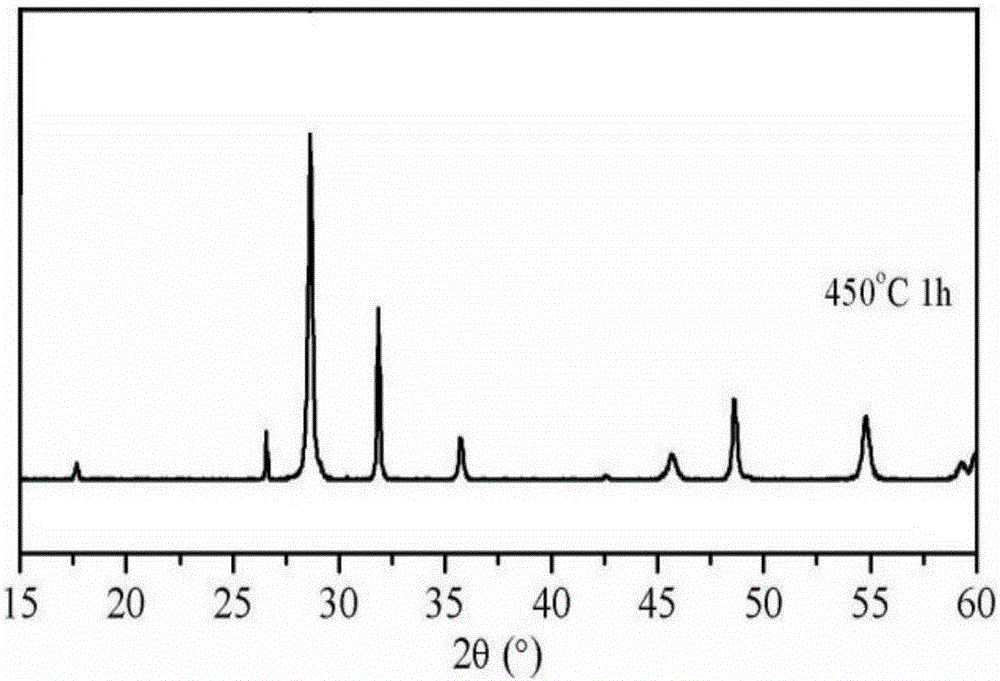Method for preparing new lead-acid battery from active substances of waste and old lead-acid battery
A lead-acid battery, active material technology, applied in lead-acid battery, lead-acid battery construction, secondary battery manufacturing and other directions, can solve problems such as simplifying waste lead-acid battery recycling process, and improve production efficiency , The effect of improving electrochemical performance and shortening production cycle
- Summary
- Abstract
- Description
- Claims
- Application Information
AI Technical Summary
Problems solved by technology
Method used
Image
Examples
Embodiment 1
[0046] A kind of method utilizing the active material of waste lead-acid battery of the present invention to prepare new lead-acid battery comprises the steps:
[0047] (1) The waste lead-acid battery is cut from the upper part, and the positive electrode sheet and the negative electrode sheet, the electrolyte sulfuric acid, and the plastic casing are obtained by separation; the positive electrode sheet and the negative electrode sheet are respectively processed by water flow washing, ultrasonic wave or mechanical impact to obtain the positive electrode active material powder ( Hereinafter referred to as "positive electrode powder"), negative electrode active material powder (hereinafter referred to as "negative electrode powder"), positive electrode grid alloy, negative electrode grid alloy and waste separator;
[0048] (2) Put the positive electrode powder into a stirred reactor, and analyze the PbSO in the positive electrode powder obtained 4 content, according to PbSO 4 A...
Embodiment 2
[0056] The chemical treatment process of positive electrode powder and negative electrode powder is as follows:
[0057] Positive electrode powder treatment: put the positive electrode powder into a stirred reactor, analyze and determine the PbSO in the positive electrode powder 4 The content of sodium carbonate added and PbSO in positive electrode powder 4 The molar ratio is 0.5:1 to partially desulfurize the positive electrode powder. Stir to react, the reaction temperature is 30°C, and the reaction time is 1h; the solid is obtained by filtration, and then washed to remove sodium sulfate; the obtained solid is calcined in an air atmosphere at 500°C for 1h to obtain a new positive electrode powder;
[0058] Negative electrode powder treatment: put the negative electrode powder into a stirred reactor, analyze and determine the PbSO in the negative electrode powder 4 content, according to PbSO 4 The content of excess 5% NaOH aqueous solution is added to completely desulfuriz...
Embodiment 3
[0061] The chemical treatment process of positive electrode powder and negative electrode powder is as follows:
[0062] Positive electrode powder treatment: put the positive electrode powder into a stirred reactor, analyze and determine the PbSO in the positive electrode powder 4 content, according to PbSO 4 Add an excess of 5% KOH aqueous solution to completely desulfurize the positive electrode powder, and stir to make it react. The reaction temperature is 40°C, and the reaction time is 0.5h; the solid is obtained by filtration, and then washed to remove potassium sulfate; the obtained solid is calcined in an air atmosphere at 600°C for 0.5h to obtain a new positive electrode powder;
[0063] Negative electrode powder treatment: put the negative electrode powder into a stirred reactor, analyze and determine the PbSO in the negative electrode powder 4 content, the added potassium carbonate and PbSO in the negative electrode powder 4 The molar ratio is 0.9:1, so that the n...
PUM
 Login to View More
Login to View More Abstract
Description
Claims
Application Information
 Login to View More
Login to View More - R&D
- Intellectual Property
- Life Sciences
- Materials
- Tech Scout
- Unparalleled Data Quality
- Higher Quality Content
- 60% Fewer Hallucinations
Browse by: Latest US Patents, China's latest patents, Technical Efficacy Thesaurus, Application Domain, Technology Topic, Popular Technical Reports.
© 2025 PatSnap. All rights reserved.Legal|Privacy policy|Modern Slavery Act Transparency Statement|Sitemap|About US| Contact US: help@patsnap.com



